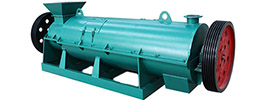The raw materials for seedling substrate soil are diverse, each with unique properties and suitable applications. Below is a detailed summary of the raw materials and their mixing methods:
Raw Materials for Seedling Substrate Soil
-
Peat: Peat soil is formed from the carbonization of sphagnum moss, rich in organic matter, with good water retention and excellent permeability. There are two common types of peat: brown peat, which is rich in organic matter and acidic, and black peat, which contains more minerals, with less organic matter and a slightly acidic or neutral pH.
-
Perlite: Perlite is a lightweight, porous volcanic rock named for its pearl-like appearance. It has excellent air permeability and water retention, making it a common raw material for seedling substrate soil.
-
Vermiculite: Vermiculite is a layered silicate mineral that, after high-temperature expansion, provides good water retention and air permeability, making it an important component of seedling substrate soil.
-
Leaf Mold: Formed from the decomposition of fallen leaves, dead grass, and other organic matter, leaf mold is rich in humus, with good water retention and permeability.
-
Garden Soil: Also known as vegetable garden soil or farmland soil, it is sourced from the surface layer of vegetable gardens, orchards, and other areas. It contains a certain amount of humus and exhibits good physical properties, often serving as the basis for many types of potting soil.
-
Sandy Soil: Including plain sandy soil sourced from riverbanks, it excels in drainage and air permeability, often mixed with other potting materials to enhance drainage.
-
Plant Ash: Obtained from the burning of straw or other weeds, plant ash is rich in potassium fertilizer, improving soil drainage and air permeability while making the soil slightly alkaline.
-
Rice Husk Ash: Ash formed from the burning of rice husks, it is slightly alkaline and rich in potassium, also providing good drainage and air permeability.
-
Wood Chips: A newly emerging potting material in recent years, it is loose and permeable, with excellent water retention and drainage properties, strong insulation, light weight, and cleanliness.
-
Organic Fertilizer: Such as composted chicken manure, cow manure, etc., these fertilizers not only provide nutrients to plants but also improve soil structure, enhancing soil fertility and air permeability.
In addition, there are various other raw materials such as coconut coir, slag, stove ash, wood shavings, bark, corn stalks, sunflower stalks, etc., which can be flexibly selected based on actual needs and plant characteristics.
Mixing Methods
-
Determine the Formula: Based on the type of plant being grown and its growth requirements, select an appropriate substrate formula. For example, for potted flowers and ornamental plants that require high water retention, a mixture of peat, vermiculite, and perlite in a ratio of 5:2.5:2.5 can be chosen. For drought-tolerant and low water-holding potted flowers and ornamental plants, a mixture of peat, perlite, and vermiculite in a 1:1:1 ratio can be used.
-
Mix the Raw Materials: Combine the selected raw materials according to the formula ratio, ensuring even distribution.
-
Heap Fermentation: Forty to fifty days before sowing and seedling, heap the mixed substrate soil for fermentation. During the fermentation process, the temperature will gradually rise. When it reaches 55-60°C, turn the pile once. After a total of two to three turns, the substrate soil will be ready for sowing and seedling.
-
Disinfection Treatment: Before sowing, disinfect the substrate soil to kill bacteria and eggs. Common disinfection methods include steaming and chemical disinfection.
-
Filling Trays and Sowing: Fill the seedling trays with the disinfected substrate soil, scrape it flat with a plank, and avoid pressing it too tightly. Then, gently press small holes into the filled substrate, place the seeds in the holes, and cover them with a layer of substrate until it is flush with the tray opening.
In summary, the raw materials for seedling substrate soil are abundant and diverse, with flexible mixing methods. In practical operations, plant species, growth requirements, and environmental conditions should be considered comprehensively for selection.
 Send us a Email
Send us a Email Wulong Industrial Cluster
Wulong Industrial Cluster Have any question?
Have any question?



















